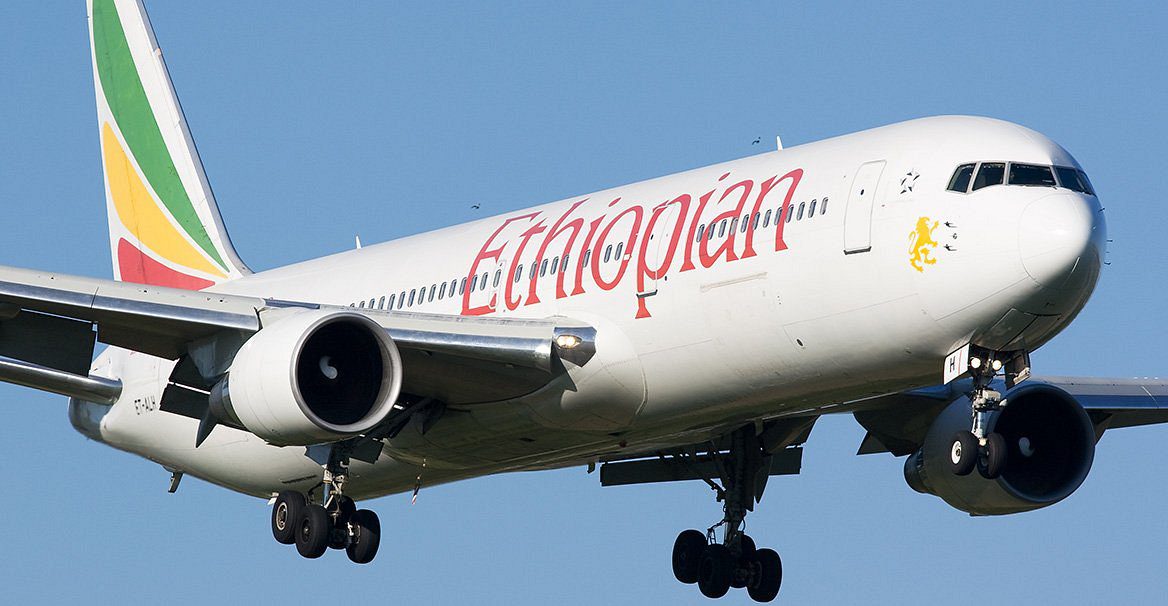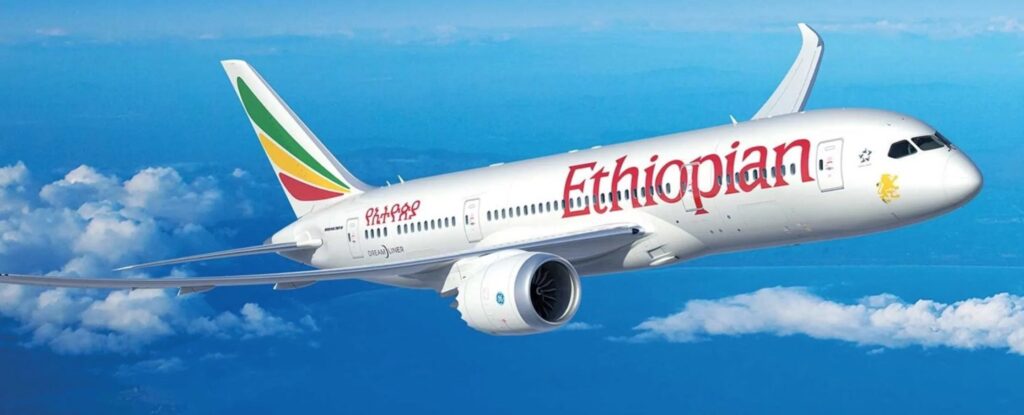Ethiopian Airlines new airport project will see Africa’s largest airport set base in Abusera, Bishoftu. Bishoftu lies southeast of Ethiopia’s capital Addis Ababa. It will be the new hub for Africa’s most successful airline currently operating from Bole Addis Ababa International Airport (ADD).
This ambitious project will handle an estimated 100 million passengers each year. Bole Addis Ababa International Airport is nearing its maximum capacity of handling 25 million passengers each year.
What is Unique About Ethiopian Airlines New Airport Project?
The new project will triple the airline’s passenger handling capacity to 100 million annually from 25 million passengers. Further, the airport will comfortably provide parking space for at least 270 aircraft.
Bishoftu came up as an ideal location for this new project. Located 25 miles (45km) from Addis Ababa, Bishoftu has expansive land for the project. The Ethiopian Airlines new airport project will be a 21-mile stretch (35km) stretch completed in 2029.

Ethiopian Airlines. The airline has launched an ambitious $6 billion new airport project in Bishoftu, some 45km from Addis Ababa. Photo/TravelAdvisor
Ethiopian Airlines CEO Mesfin Tasew said he is optimistic about the five-year project to transform African air travel. Dar Al-Handasah, an engineering consultancy firm based in Dubai and owned by the Sidara Group of Companies is overseeing the design of the airport. The first phase which includes a world-class terminal building according to Tasew will handle 60 million passengers and will cost $6 billion. It will also have four runways.
The airline will source funds for the construction through loans and financial input from the private sector. Tariq Al-Qanni, Dar’s director of operations is excited about the new project. Speaking after the signing of a memorandum of understanding (MoU) with the airline on August 10, Tasew said Dar will help in selecting contractors for the building of the airport.
“The scope of the agreement is for Dar to develop the detailed design of the new airport and at the same time to assist Ethiopian Airlines in the selection of the contractors who will build the new airport facilities,” the Ethiopian Airlines CEO said according to Fana, a state-aligned broadcaster.
Dar Al-Handasah is reputed for its modern airport designs with the Dubai International Airport internationally coded as DXB in its work portfolio. Other major international airports Dar has designed and supervised their construction include
- Angola’s Catumbela Airport (CBT)
- Saudi Arabia’s King Abdul Aziz International Airport (JED)
Where is the New Airport in Ethiopia?
Bishoftu, formerly called Debre Zeyit will house Ethiopian Airlines new airport project. It has land for infrastructural expansion besides being a popular getaway destination for city dwellers. Bishoftu’s fame comes from the following:
- The presence of crater lakes such as Lakes Bishoftu, Chelekleka, Hora, Babogaya and Kuriftu
- Nature with gorgeous rolling hills, lush greenery
- Relaxed ambience
- Agricultural research centre
The new airport will handle at least 100 million passengers annually when completed in 2029 making it the biggest international airport in Africa. ADD is nearing its 25 million passenger handling threshold. Data from the airline indicates that Ethiopian Airlines handles 22 million international passengers every year and a further two million domestic travellers. This necessitated building of a bigger airport to cater for the airline’s increasing passenger and cargo demand across the world.

Ethiopian Airlines. Photo/News Central TV
What Makes Ethiopian Airlines Different from Other Airlines?
An extensive route network, modern fleet, efficient management and state support make Ethiopian Airlines stand out. As the busiest African airline, the Ethiopian carrier flies to 155 destinations globally. Moreover, it boasts of a modern fleet of 154 aircraft operating on different routes. Among them is Bombardier which operates domestic flights, Boeing taking on regional flights while Airbus handles international flights. No other African airline operates such a huge fleet of modern aircraft.
In addition, this fleet is fuel-efficient, reliable, comfortable and safe. Most passengers who choose the airline are inspired by these factors alongside the extensive route network. Another factor behind the airline’s success is state support. While the Ethiopian government has a stake in the airline, it doesn’t meddle with the running of the national carrier. Tasew and his team make independent decisions without being influenced by the government as is the case with many struggling African airlines.
The airline’s success is to a greater extent pegged to its mutually beneficial alliances with other players in the aviation industry. As a result, this airline has a huge stake in the following five airlines:
- Zambia Airways (49%)
- Guinea Airways (100%)
- Ethiopia-Mozambique Airlines (49%)
- Chad Airlines (49%)
- Air Malawi (49%)
All these elements combined earned the airline USD 7 billion in the 2023/24 financial year. Again, no other airline in Africa has earned such an amount in a year.








